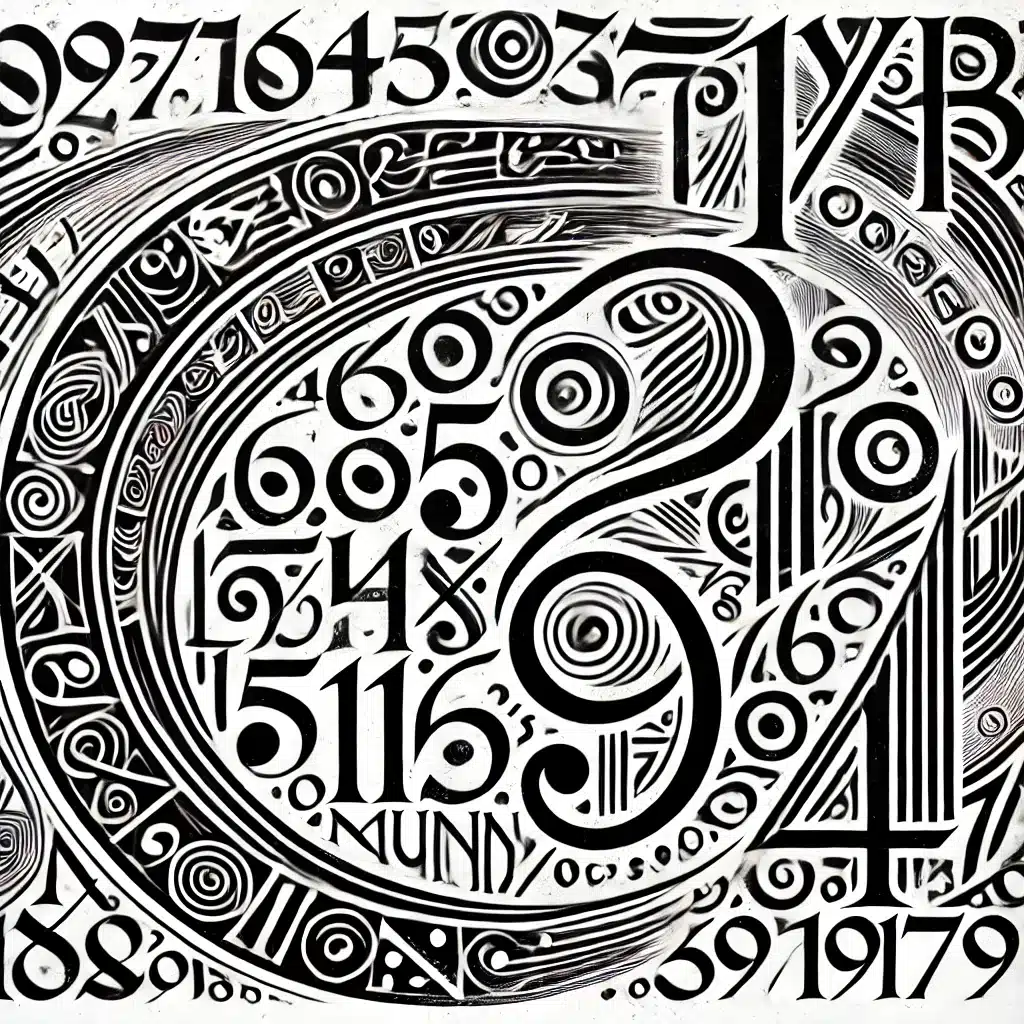Numbers are essential in every language, and Irish is no exception. Counting, giving quantities, and discussing numbers opens a gateway to practical conversations. In Irish, numbers also reveal the poetic and grammatical beauty of the language. As I learn Gaeilge, understanding numbers has been an exciting challenge—combining linguistic logic with a touch of cultural flair.
In this post, we’ll explore basic Irish numbers, pronunciation, and their unique structures. Along the way, we’ll connect this modern usage to ancient Irish texts, where counting held symbolic and practical significance.

Counting in Irish – The Basics
Numbers 1 to 10
The Irish counting system begins with simple yet distinct words for the numbers one to ten:
- A haon (pronounced: ah HAYN) – One
- A dó (pronounced: ah DOE) – Two
- A trí (pronounced: ah TREE) – Three
- A ceathair (pronounced: ah KAH-her) – Four
- A cúig (pronounced: ah COO-ig) – Five
- A sé (pronounced: ah SHAY) – Six
- A seacht (pronounced: ah SHAKT) – Seven
- A hocht (pronounced: ah HOHKT) – Eight
- A naoi (pronounced: ah NEE) – Nine
- A deich (pronounced: ah JEH) – Ten
The prefix “a” is a marker often used when numbers stand alone, helping learners distinguish them in conversation.
The Numbers Beyond Ten
Numbers eleven to nineteen follow a pattern:
- Combine “déag” (teen) with the base number.
For example:- Aon déag (pronounced: AYN DEH-ug) – Eleven
- Dó dhéag (pronounced: DOE YAY-ug) – Twelve
For multiples of ten, the system is additive:
- Fiche (pronounced: FIH-heh) – Twenty
- Tríocha (pronounced: TREE-uh-khuh) – Thirty
For more complex numbers like 21, combine the base number with “is fiche”:
- A haon is fiche (21, pronounced: ah HAYN iss FIH-heh).
Counting Objects – A Different Structure
When counting objects, Irish uses a separate grammatical structure. Numbers influence the initial letters of words, introducing lenition or eclipses in certain cases:
- Dhá chat (pronounced: GAW khat) – Two cats
- Trí mhadra (pronounced: TREE WAH-dra) – Three dogs
This structure may seem daunting, but it reflects Irish’s grammatical elegance.
Quantities and Common Phrases
To discuss amounts or ask how many of something, you’ll use these phrases:
- Cé mhéad…? (pronounced: KAY VAY-ud) – “How many…?”
- Tá sé mórán (pronounced: TAW shay MOH-rawn) – “It is many.”
- Níl sé ach beagán (pronounced: NEEL shay ahk BEG-awn) – “It is only a little.”
For practical applications:
- Cé mhéad duine atá anseo? (pronounced: KAY VAY-ud DIN-uh uh-TAWN in-SHUH?) – “How many people are here?”
These phrases connect numbers to everyday use, enriching your conversations.
Numbers in Ancient Irish Texts
In ancient Irish mythology and law, numbers frequently appear with symbolic weight. A striking example can be found in the Lebor Gabála Érenn (The Book of Invasions), a pseudo-historical account of Ireland’s origins.

In one section, the Tuatha Dé Danann (People of the Goddess Danu) are described as arriving in Ireland with four treasures: the Lia Fáil (Stone of Destiny), the Spear of Lugh, the Sword of Nuada, and the Cauldron of Dagda. The number four here is not arbitrary but represents balance and completeness, reflecting the harmony between the natural and supernatural realms.
The text often employs numbers symbolically, with patterns like three and seven recurring throughout. The number three, for instance, is central to Irish cosmology, appearing in triads such as land, sea, and sky or birth, life, and death. Such numerical patterns suggest a culture deeply attuned to cycles, structure, and the spiritual significance of numbers.
The linguistic echoes of these patterns can be found in modern Irish phrases. For instance, trí rud (three things) retains the same foundational sense of completeness that appears in mythological contexts.
Conclusion
Numbers in Irish are more than a linguistic necessity; they offer a bridge to the language’s poetic structure and cultural heritage. From counting cats and cups of tea to understanding their symbolic resonance in ancient texts, numbers in Gaeilge tell stories as well as facts.
With this guide, you’re equipped to dive into the world of Irish counting, whether you’re asking Cé mhéad? or reflecting on the treasures of the Tuatha Dé Danann.
To find out more about my writing journey, please click here or to contact me see here.
Disclaimer: This post was written with the support of an AI assistant.

Leave a Reply
You must be logged in to post a comment.